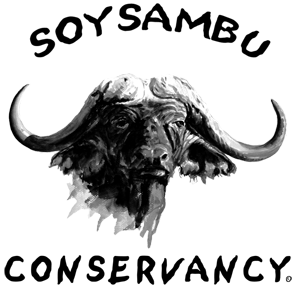Warning: The blog below contains links to some graphic images…
Poaching for the bush meat trade has long been a problem on Soysambu.
Trespassers break onto The Conservancy and set snares – nooses made from lengths of wire, attached to a tree, bush or fence and hung over animal trails (see image below).
The unwitting animal, be it an Impala, Gazelle, Zebra, Buffalo, Eland etc, walks into the snare and becomes trapped. The more it pulls or struggles the tighter the snare becomes, eventually leading to a cruel death by suffocation. The animal is then collected and either eaten, or the meat sold.
A male Impala hanging dead in a snare
There are two different reasons people will poach bush meat. The first is for commercial sale locally, or to butchers in Nairobi and compared to the average local salary, the money collected through bush meat sale is huge. A kilo of Warthog meat will sell for the equivalent of US$1.40, which is only just below the average wage for a full days manual labour. In a land where life is extremely hard and nothing seems to come easily, who can blame them for taking advantage of a ‘free’ resource, which to them is not much different than a cow or a goat. The below image is of Buffalo meat being retrieved from a house by Conservancy who were tipped off by a community member.
Poached Buffalo meat being retrieved from a house
The second reason for poaching bush meat is subsistence. The Conservancy is surrounded by poor and starving communities who turn to the Conservancy’s abundance of wild animals as a source of food. When they can’t afford anything to eat, morally it is hard to then punish them for snaring these animals.
But something must be done to stop these habits. Warthog and Eland numbers on the Conservancy have declined markedly since 2005 and it is suspected that the main cause is poaching.Through community outreach programs the Conservancy is trying to educate the community to the importance of wildlife, and how it can benefit their livelihoods in the long term. However it seems hard to talk of the long term to people who don’t know where their next meal will come from.
Tourism is the primary economic income for Kenya, and now that there are such limited areas in Kenya where wildlife can roam free, animal numbers are dropping, which will inevitably lead to a decrease in tourism. The image below of a Zebra foot that was caught in a snare, the snare cutting all the way to the bone- not exactly what tourists want to see…
A Zebra foot caught in a snare
Without a secure perimeter fence around the 84km boundary it is difficult to keep determined poachers out. The fence, however, should be the last resort in protecting the animals. We want to stop people from wanting to poach what is left of their national icons.A gradual decrease in the poaching activity is beginning to be noticeable as our relationships with communities develop and they see the benefits of the Conservancy.
But the circumstances under which we are working- asking starving people to stop eating the animals- are difficult.
So how do we stop this problem?








